
Find Help
More Items From Ergsy search
-

What is Bubonic Plague?
Relevance: 100%
-

What is the bubonic plague?
Relevance: 99%
-

Are there vaccines for the bubonic plague?
Relevance: 97%
-

How is the bubonic plague transmitted?
Relevance: 95%
-
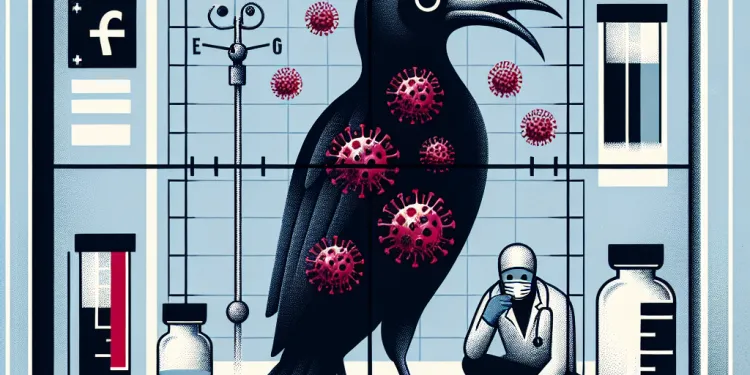
What are the symptoms of the bubonic plague?
Relevance: 94%
-

Can the bubonic plague be prevented?
Relevance: 94%
-
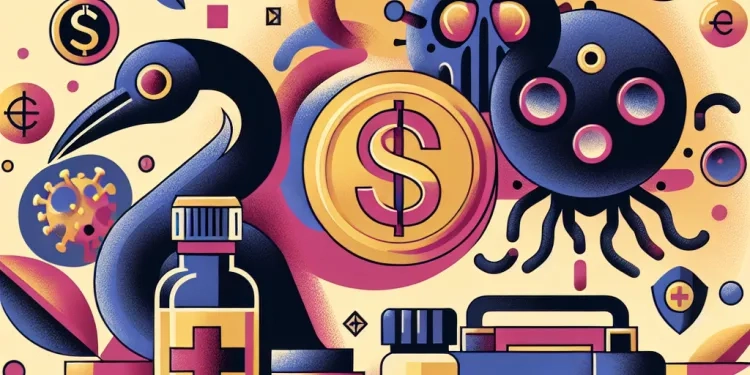
Is the bubonic plague contagious between humans?
Relevance: 93%
-

How can the bubonic plague be treated?
Relevance: 91%
-
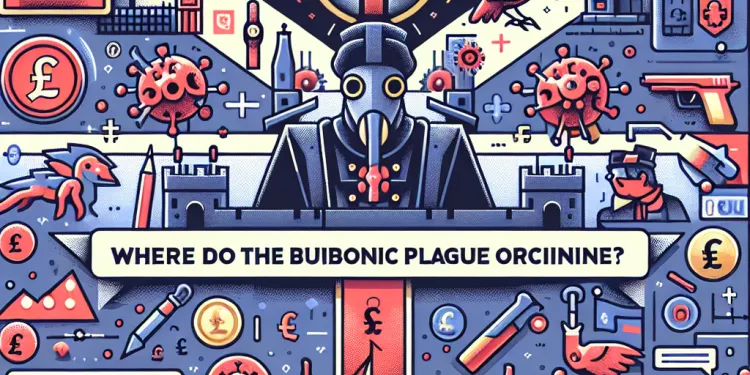
Where did the bubonic plague originate?
Relevance: 91%
-
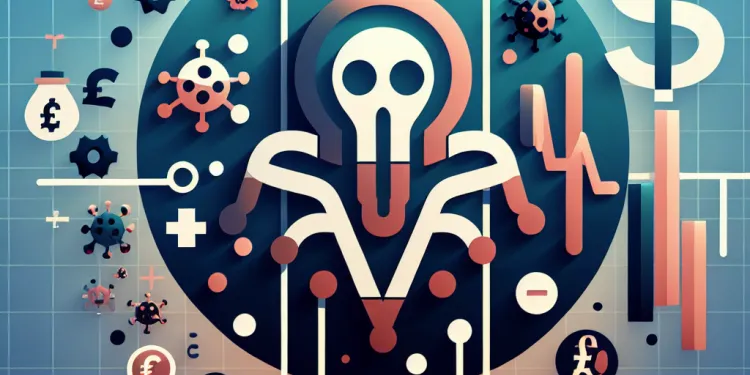
What is the mortality rate of untreated bubonic plague?
Relevance: 89%
-

Did the bubonic plague affect only Europe?
Relevance: 88%
-

How was the bubonic plague controlled historically?
Relevance: 86%
-
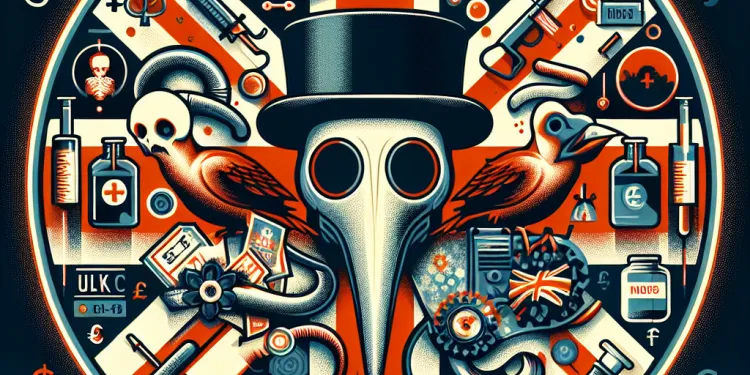
What historical event is the bubonic plague known for?
Relevance: 85%
-

Can the bubonic plague become resistant to antibiotics?
Relevance: 83%
-

What advancements have been made in understanding the bubonic plague?
Relevance: 81%
-

Are there modern outbreaks of bubonic plague?
Relevance: 67%
-
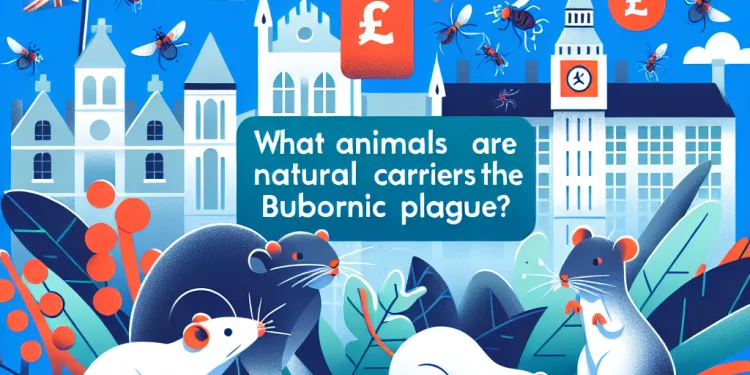
What animals are natural carriers of the bubonic plague?
Relevance: 61%
-

What is a bubo?
Relevance: 45%
-

What public health measures are important for managing the plague?
Relevance: 42%
-

Is the bubonic plague still a global health threat?
Relevance: 35%
-
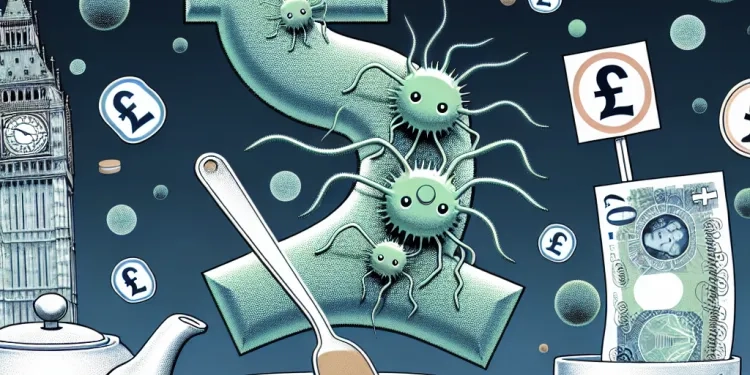
How does the bacteria Yersinia pestis survive between outbreaks?
Relevance: 9%
-
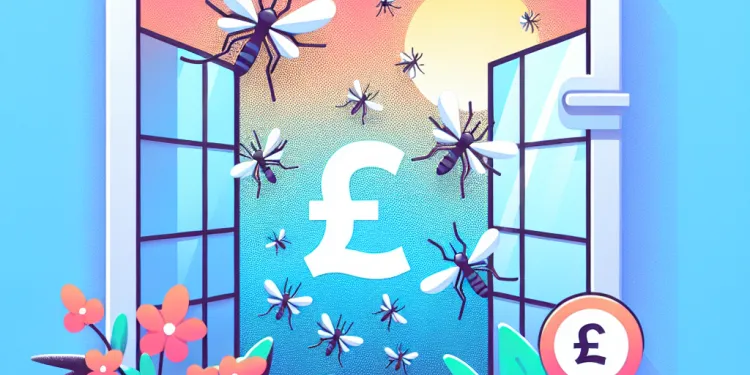
Are Mosquito window screens effective?
Relevance: 7%
What is the Bubonic Plague?
The bubonic plague, also known as the Black Death, is a highly infectious and often deadly disease caused by the bacterium Yersinia pestis. This bacterium is typically transmitted to humans through the bite of infected fleas that infest rodents, primarily rats. Throughout history, the bubonic plague has been responsible for several devastating pandemics, causing millions of deaths across Europe, Asia, and Africa.
Historical Background
One of the most notorious outbreaks of the bubonic plague occurred in the 14th century, famously known as the Black Death. This pandemic swept through Europe between 1347 and 1351, killing an estimated 25 to 30 million people, which accounted for about one-third of the European population at the time. The rapid spread of the disease was facilitated by the movement of people and goods along trade routes, as well as unsanitary living conditions which were prevalent in medieval towns and cities.
Symptoms of Bubonic Plague
Symptoms of the bubonic plague typically appear between one and seven days after infection. The most characteristic symptom is the sudden onset of fever, chills, and weakness. Affected individuals often develop swollen and painful lymph nodes, called buboes, commonly found in the groin, neck, or armpit. Other symptoms may include headaches, nausea, vomiting, and septicemia if the infection enters the bloodstream, potentially leading to more severe forms such as pneumonic or septicemic plague.
Modern Occurrences and Treatments
Despite its historical infamy, the bubonic plague still exists today, although outbreaks are much less common and are typically restricted to specific rural areas. Modern medicine has greatly reduced the threat posed by the plague. With early diagnosis, the disease can be effectively treated with antibiotics, and supportive care significantly improves the chances of recovery.
Preventive Measures
Preventing the spread of the bubonic plague involves controlling rodent populations and reducing human exposure to fleas. Public health strategies include maintaining sanitary living conditions, using insect repellents, and implementing pest control programs. During an outbreak, it is crucial for public health authorities to identify cases quickly and provide antibiotics to those who may have been exposed.
Conclusion
The bubonic plague, while not the threat it once was, remains an important part of medical history and a reminder of the impact infectious diseases can have on society. Increased awareness, improved hygiene, and advances in medical treatments have successfully mitigated the risk. Nevertheless, ongoing vigilance and public health efforts are necessary to prevent future outbreaks and safeguard public health.
What is the Bubonic Plague?
The bubonic plague is also called the Black Death. It is a very serious illness that can make people very sick. A tiny germ called Yersinia pestis causes it. People usually catch it from flea bites. These fleas live on rats. In history, the bubonic plague has made many people sick and has been very dangerous.
Historical Background
A long time ago, in the 14th century, the bubonic plague spread through Europe. This was called the Black Death. It happened between 1347 and 1351. The disease killed about 25 to 30 million people. That was a lot of people back then. The plague spread fast because people traveled along trade routes, and many towns were not clean.
Symptoms of Bubonic Plague
When someone gets the bubonic plague, they get sick usually in one to seven days. They suddenly get a fever, feel cold, and weak. Their lymph nodes get big and hurt. This usually happens in the groin, neck, or armpit. People might also get headaches, feel sick, or vomit. If the germs get into the blood, it can make people even sicker.
Modern Occurrences and Treatments
Today, the bubonic plague still exists but not like before. It mainly happens in certain rural places. Doctors can treat it with medicine called antibiotics. This helps people get better. If doctors find the plague early, they can help people recover quickly.
Preventive Measures
To prevent the bubonic plague, we must control rat populations and avoid flea bites. We should keep places clean and use bug sprays. It is also important to have programs to get rid of pests. If there is an outbreak, health workers should act fast, find cases quickly, and give medicine to people who need it.
Conclusion
The bubonic plague is not as big of a threat today as it was before. It is part of our history and shows how diseases can affect many people. We have better hygiene and medicines now, which help us stay safe. But we still need to be careful and keep working to prevent diseases in the future.
Frequently Asked Questions
What is the bubonic plague?
The bubonic plague is a bacterial infection caused by the bacterium Yersinia pestis, primarily transmitted through the bite of an infected flea.
How is the bubonic plague transmitted?
The main transmission vector is through the bite of infected fleas, which often live on rodents like rats. It can also spread through direct contact with contaminated fluids or tissues.
What are the symptoms of the bubonic plague?
Symptoms include fever, headache, chills, and swollen, painful lymph nodes (called buboes). Other symptoms may include fatigue and muscle aches.
Is the bubonic plague contagious among humans?
Direct human-to-human transmission of bubonic plague is rare; however, if the infection progresses to pneumonic plague, it can be spread through respiratory droplets.
What historical impact did the bubonic plague have?
The most notable outbreak was the Black Death in the 14th century, which killed an estimated one-third of Europe's population.
Can the bubonic plague be treated?
Yes, with prompt medical treatment using antibiotics, the bubonic plague can be effectively treated.
Which antibiotics are used to treat the bubonic plague?
Streptomycin, gentamicin, doxycycline, and ciprofloxacin are commonly used antibiotics for treating the bubonic plague.
Are there vaccines available for the bubonic plague?
There is no widely available vaccine for the bubonic plague as of now, but research and development are ongoing.
Where is the bubonic plague found today?
It is still present in parts of Africa, Asia, and the Americas, although cases are infrequent and occur mostly in rural or semi-rural areas.
What animals are common carriers of the bubonic plague?
Rodents, such as rats, squirrels, and prairie dogs, are common carriers of the plague-causing fleas.
How can one prevent bubonic plague?
Preventive measures include reducing contact with rodent populations, using flea control products, and practicing good sanitation and hygiene.
What is the role of fleas in the transmission of the bubonic plague?
Fleas are the primary vectors that transmit Yersinia pestis from infected rodents to humans through bites.
How quickly do bubonic plague symptoms appear after infection?
Symptoms usually appear within 2 to 6 days after exposure to the bacteria.
What are buboes?
Buboes are swollen and painful lymph nodes, typically found in the groin, armpit, or neck, and are a hallmark symptom of the bubonic plague.
What happens if the bubonic plague is left untreated?
If left untreated, the bubonic plague can lead to severe complications, including septicemia, and it can be fatal.
What is the mortality rate of untreated bubonic plague?
The mortality rate for untreated bubonic plague can be as high as 60% or greater, but it significantly decreases with timely antibiotic treatment.
Can the bubonic plague occur in modern times?
Yes, cases continue to occur, but they are much rarer and can be effectively treated with modern medicine.
What is the difference between bubonic, septicemic, and pneumonic plague?
Bubonic plague affects the lymph nodes, septicemic plague affects the bloodstream, and pneumonic plague affects the lungs.
Are there any long-term effects of surviving the bubonic plague?
Most people have no long-term effects if the bubonic plague is treated promptly, but recovery could be slower if complications occur.
How do health organizations manage outbreaks of the bubonic plague?
Health organizations manage outbreaks by identifying and treating infected individuals, controlling rodent populations, and educating at-risk communities.
What is the bubonic plague?
The bubonic plague is a sickness. It makes people very sick. Long ago, many people caught it and it spread fast. It is caused by germs that come from fleas and rats.
If you want to learn more or need help, try using picture books or ask someone to explain it to you with simple words. Watching videos with clear pictures can also help you understand better.
The bubonic plague is a sickness caused by tiny germs called Yersinia pestis. It mostly spreads to people from a flea bite, if the flea is carrying the germs.
How does the bubonic plague spread?
The bubonic plague is a sickness. It spreads in some ways:
- Bites from fleas that have the disease.
- Touching sick animals like rats.
- Being close to someone who is sick.
If you need help reading, you can:
- Ask someone to read it with you.
- Use audiobooks to listen.
- Use apps that read text out loud.
How It Spreads:
The disease spreads mostly when a flea that carries the disease bites you. These fleas often live on rats and mice. You can also get sick by touching fluids or tissues that have the disease.
What happens if you get bubonic plague?
If you get bubonic plague, you might:
- Feel very sick.
- Get a high fever.
- Have pains in your body.
- See bumps (called buboes) on your skin, especially in the neck, armpit, or groin.
- Feel very tired or weak.
If you think you might have these signs, tell a doctor or a grown-up.
Some signs you might have are feeling hot (fever), a sore head, and feeling cold (chills). You might also have lumps under your skin that hurt (these are called buboes). You could also feel very tired and your muscles might hurt.
Can people catch bubonic plague from each other?
The bubonic plague doesn't usually spread from one person to another. But if it turns into pneumonic plague, it can be passed on by coughing and sneezing.
Here are some ideas to help make reading easier: - **Use a ruler or finger** to keep track of your place on the page. - **Try reading out loud**. Hearing the words can help you understand them. - **Break large texts into smaller parts**. This can make them easier to understand.What happened because of the bubonic plague a long time ago?
A long time ago, the bubonic plague made a lot of people sick. It changed many things in the world. Here is how it affected people and their lives:
- Many people became ill, and lots of them sadly passed away.
- Towns and villages were very quiet because so many people were sick.
- Some jobs disappeared because there weren't enough people to work.
- People started to think differently about clean living and medicine.
To understand difficult words, you can use a dictionary. Pictures and videos about history can also help you learn more.
The worst time was the Black Death many years ago, in the 1300s. It was a bad sickness that killed about one in every three people in Europe.
Can doctors help if you get the bubonic plague?
Yes, doctors can help if you get the bubonic plague. They give people medicine to get better. If someone feels sick, they should see a doctor quickly.
Writing down your questions or asking someone to go with you to the doctor can help you understand more.
Yes, doctors can treat the bubonic plague with medicine called antibiotics. It helps make people better quickly.
What medicine helps with the bubonic plague?
Bubonic plague is a sickness.
Doctors use special medicine called antibiotics to help people get better.
If you feel sick, you should always see a doctor.
Your doctor will know the best medicine to give you.
Here are some things that can help if you have trouble reading:
- Ask someone to read with you.
- Use a ruler or your finger to follow the words.
Doctors use some medicines to help people with the bubonic plague. Here are the names of these medicines:
- Streptomycin
- Gentamicin
- Doxycycline
- Ciprofloxacin
If you find reading hard, you can ask someone to read this to you. You can also use a computer or phone to read the words out loud. This is called a screen reader.
Is there a shot to stop the bubonic plague?
The bubonic plague is a sickness. It spreads from fleas and animals.
There is no common shot for it now. But doctors can give you medicine if you get sick.
It is important to stay safe. Tell a grown-up if you see lots of dead animals. They will know what to do.
Here are some tips to stay safe:
- Wash your hands often.
- Avoid touching wild animals.
- If you see a doctor, tell them if you feel sick.
Right now, there is no shot to stop the bubonic plague, but scientists are working on it.
Where is the bubonic plague found today?
The bubonic plague can still be found in some places around the world. It is mostly in parts of Africa, Asia, and the western United States. Here are some tips to help understand better: - Look at pictures and maps to see where these places are. - Use a globe or an online map to find Africa, Asia, and the United States. - Ask an adult to help you find more information if you are curious. Remember, the bubonic plague is very rare now, and doctors know how to treat it.It is still in some places in Africa, Asia, and the Americas. It does not happen very often and mostly happens in countryside areas.
Which animals can spread the bubonic plague?
The bubonic plague is a bad sickness. Some animals can carry it. This means they can spread it to people. These animals are:
- Rats
- Fleas (tiny bugs that live on animals)
- Squirrels
- Rabbits
- Prairie dogs
If you learn about these animals, it can help you stay safe.
Here are some ways to be careful:
- Stay away from wild animals.
- Keep your home clean to avoid rats and fleas.
- If you see a sick animal, tell an adult.
For more help, you can use tools like:
- Images of animals to learn what they look like.
- Videos that show how these animals behave.
- Stories that make learning fun.
Remember, staying informed keeps you and your family safe!
Animals like rats, squirrels, and prairie dogs can carry fleas that spread the plague.
How can you stop bubonic plague?
Bubonic plague is a serious illness. Here are ways to stop it:
- Stay away from wild animals like rats.
- Keep your house clean.
- If you see fleas, try to get rid of them.
- Wear clothes that cover your skin to avoid bites.
- Wash your hands often with soap and water.
- Visit a doctor if you feel sick.
Tools you can use:
- Bug spray
- Soap and water
To stay safe, try to keep away from places with lots of mice and rats. Use medicine on your pets to keep away fleas. Keep your home and yourself clean.
How do fleas spread the bubonic plague?
Fleas are small bugs that can jump from animals to people.
They bite animals like rats that have a disease called the bubonic plague.
Then, fleas can bite people and give them the same disease.
Use pictures or videos to help understand.
Ask an adult for help if you need it.
Fleas are tiny bugs that spread a germ called Yersinia pestis. They get this germ from sick rodents and can give it to people when they bite them.
How fast do signs of bubonic plague show up after you get it?
You might start feeling sick 2 to 6 days after coming near the germs.
What Are Buboes?
Buboes are big, sore bumps on the body. They might feel hot and hurt when you touch them. If you have these bumps, you should see a doctor.
Try using a magnifying glass if it's hard to read. Point to each word as you say it out loud. This can help you understand better.
Buboes are big and sore lumps. They happen in places like your groin, armpit, or neck. These lumps are a sign of a sickness called the bubonic plague.
What if the bubonic plague is not treated?
If you do not get medicine for the bubonic plague, it can make you very sick. It can cause a bad infection in your blood. This can be very dangerous and can even cause death.
How many people die from bubonic plague if they do not get medicine?
If someone gets sick with the bubonic plague and doesn't get any medicine, 6 out of 10 people might die. But, if they get medicine quickly, most people get better.
Can people get the bubonic plague today?
Yes, some people still get sick, but it does not happen very often now. Doctors can make them better with new medicine.
What are bubonic, septicemic, and pneumonic plague?
These are illnesses caused by germs. They can make people very sick.
Bubonic Plague: This illness makes your body swell. It can also make you feel hot and sick.
Septicemic Plague: This illness is in your blood. It can make you have a fever and your skin get dark spots.
Pneumonic Plague: This illness affects your lungs. It can make you cough and have trouble breathing.
It is important to see a doctor if you feel sick. They can help you get better.
Support tools can be using a caregiver to explain things or listening to an audio version.
Bubonic plague makes the lymph nodes sick. Septicemic plague makes the blood sick. Pneumonic plague makes the lungs sick.
What happens to people after they survive the bubonic plague?
Here is some help to understand:
- Bubonic Plague: It's a serious sickness from long ago.
- Survive: To get better after being very sick.
- Long-term effects: Things that can happen to your body or mind a long time after you get better.
Some tools to help:
- Ask a teacher or parent to explain words you don't know.
- Use pictures to help understand tricky ideas.
- Make a list of questions about what you want to know.
If people get medicine quickly, they usually get better and have no problems later. But if problems happen, getting better might take longer.
How do health groups stop the spread of the bubonic plague?
Health groups help stop the spread of the plague in these ways:
- They find out where the plague is happening.
- They give medicine to people who are sick.
- They tell people how to stay safe.
- They make sure areas are clean.
If you want help reading, you can:
- Use tools that read the text out loud.
- Ask someone to explain things you don't understand.
- Take your time and read slowly.
Health groups help stop the spread of diseases. They find and treat sick people, keep rat numbers low, and teach people how to stay safe.
Useful Links
- Ergsy carfully checks the information in the videos we provide here.
- Videos shown by Youtube after a video has completed, have NOT been reviewed by ERGSY.
- To view, click the arrow in centre of video.
- Most of the videos you find here will have subtitles and/or closed captions available.
- You may need to turn these on, and choose your preferred language.
- Go to the video you'd like to watch.
- If closed captions (CC) are available, settings will be visible on the bottom right of the video player.
- To turn on Captions, click settings .
- To turn off Captions, click settings again.
More Items From Ergsy search
-

What is Bubonic Plague?
Relevance: 100%
-

What is the bubonic plague?
Relevance: 99%
-

Are there vaccines for the bubonic plague?
Relevance: 97%
-

How is the bubonic plague transmitted?
Relevance: 95%
-

What are the symptoms of the bubonic plague?
Relevance: 94%
-

Can the bubonic plague be prevented?
Relevance: 94%
-

Is the bubonic plague contagious between humans?
Relevance: 93%
-

How can the bubonic plague be treated?
Relevance: 91%
-

Where did the bubonic plague originate?
Relevance: 91%
-

What is the mortality rate of untreated bubonic plague?
Relevance: 89%
-

Did the bubonic plague affect only Europe?
Relevance: 88%
-

How was the bubonic plague controlled historically?
Relevance: 86%
-

What historical event is the bubonic plague known for?
Relevance: 85%
-

Can the bubonic plague become resistant to antibiotics?
Relevance: 83%
-

What advancements have been made in understanding the bubonic plague?
Relevance: 81%
-

Are there modern outbreaks of bubonic plague?
Relevance: 67%
-

What animals are natural carriers of the bubonic plague?
Relevance: 61%
-

What is a bubo?
Relevance: 45%
-

What public health measures are important for managing the plague?
Relevance: 42%
-

Is the bubonic plague still a global health threat?
Relevance: 35%
-

How does the bacteria Yersinia pestis survive between outbreaks?
Relevance: 9%
-

Are Mosquito window screens effective?
Relevance: 7%